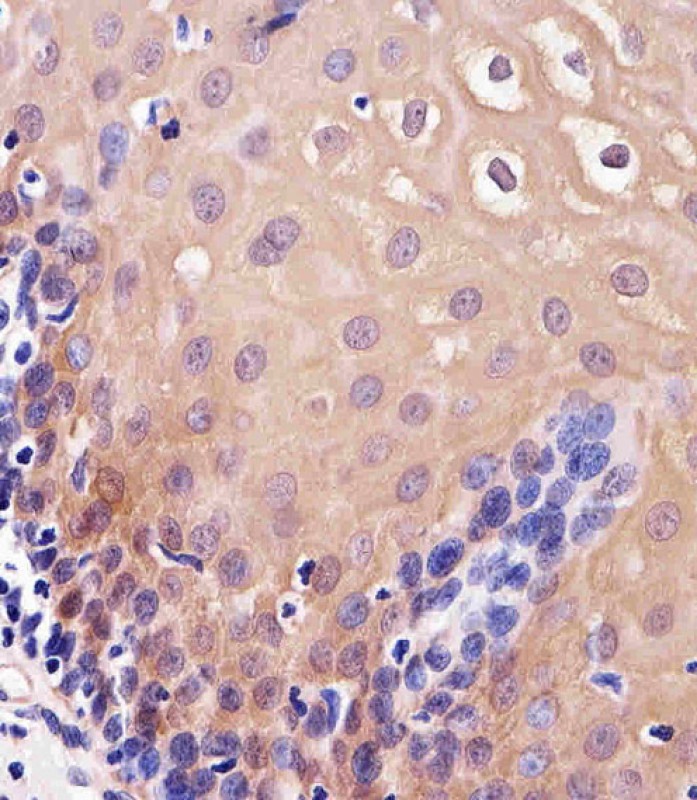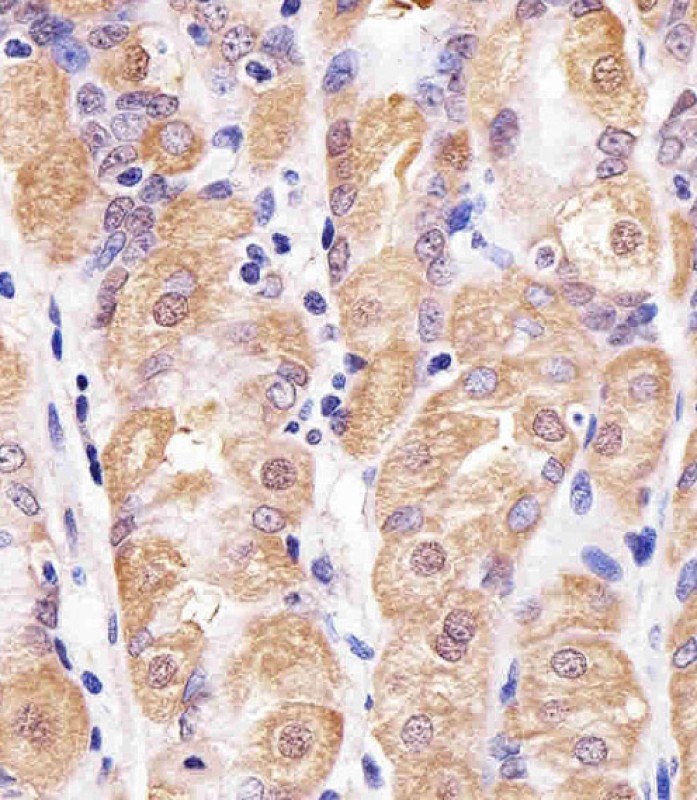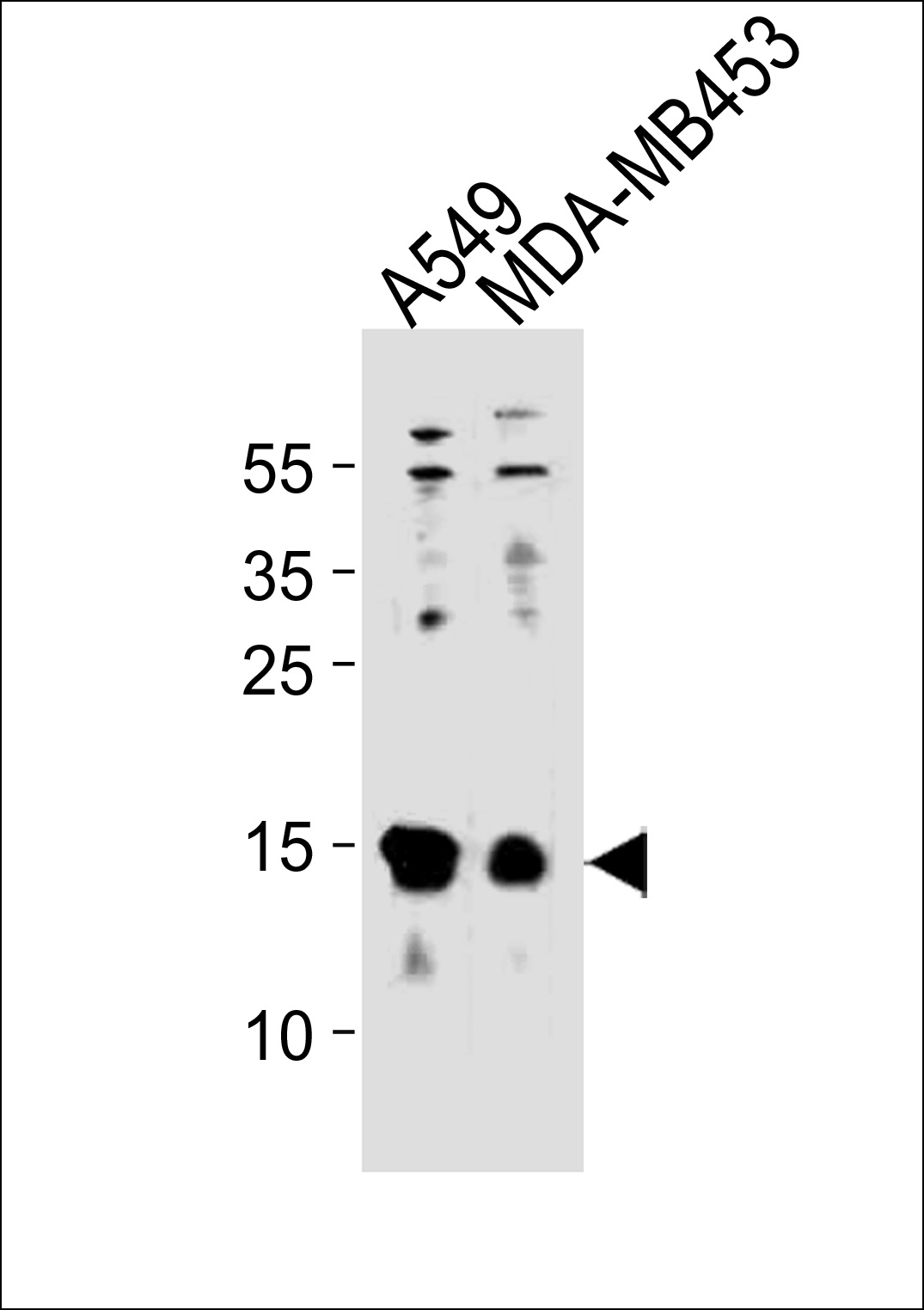产品名称
TXN Rabbit Polyclonal Antibody (C-term)
别名
Thioredoxin, Trx, ATL-derived factor, ADF, Surface-associated sulphydryl protein, SASP, TXN, TRDX, TRX, TRX1
存储缓冲液
Purified polyclonal antibody supplied in PBS with 0.09% (W/V) New type preservative N. This antibody is purified through a protein A column, followed by peptide affinity purification.
Human Gene ID
NP_001231867.1;NP_003320.2
Human Swissprot No.
P10599
特异性
This TXN antibody is generated from rabbits immunized with a KLH conjugated synthetic peptide between 66-94 amino acids from the C-terminal region of human TXN.
稀释度
IHC-P~~1:100~500;WB~~1:1000
运输及保存条件
Maintain refrigerated at 2-8°C for up to 2 weeks. For long term storage store at -20°C in small aliquots to prevent freeze-thaw cycles.
背景介绍
Participates in various redox reactions through the reversible oxidation of its active center dithiol to a disulfide and catalyzes dithiol-disulfide exchange reactions. Plays a role in the reversible S-nitrosylation of cysteine residues in target proteins, and thereby contributes to the response to intracellular nitric oxide. Nitrosylates the active site Cys of CASP3 in response to nitric oxide (NO), and thereby inhibits caspase-3 activity. Induces the FOS/JUN AP-1 DNA-binding activity in ionizing radiation (IR) cells through its oxidation/reduction status and stimulates AP-1 transcriptional activity.
ADF augments the expression of the interleukin-2 receptor TAC (IL2R/P55).
细胞定位
Nucleus. Cytoplasm. Secreted Note=Translocates from the cytoplasm into the nucleus after phorbol 12- myristate 13-acetate induction (PMA) (PubMed:9108029). Predominantly in the cytoplasm in non irradiated cells (PubMed:11118054). Radiation induces translocation of TRX from the cytoplasm to the nucleus (PubMed:11118054). Secreted by a leaderless secretory pathway (PubMed:1332947).
功能
Participates in various redox reactions through the reversible oxidation of its active center dithiol to a disulfide and catalyzes dithiol-disulfide exchange reactions (PubMed:
2176490, PubMed:
17182577, PubMed:
19032234). Plays a role in the reversible S- nitrosylation of cysteine residues in target proteins, and thereby contributes to the response to intracellular nitric oxide. Nitrosylates the active site Cys of CASP3 in response to nitric oxide (NO), and thereby inhibits caspase-3 activity (PubMed:
16408020, PubMed:
17606900). Induces the FOS/JUN AP-1 DNA-binding activity in ionizing radiation (IR) cells through its oxidation/reduction status and stimulates AP-1 transcriptional activity (PubMed:
9108029, PubMed:
11118054).



